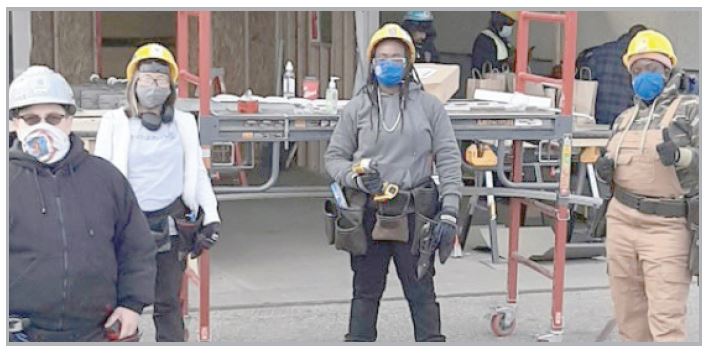TORONTO – The construction sector is an important driver of the Canadian economy. Investments in infrastructure projects is just one way to create more jobs and stimulate economic recovery from the impacts of Covid-19. In Ontario, about 500,000 labourers are employed in the construction industry. They are the ones helping drive the economy forward.
As the province’s labour force ages, approximately 86,000 workers (particularly in the skilled trades) are expected to retire this decade. Therefore, there is strong demand for new apprentices and certified tradespeople.
Where the national figures seem to be on the downward trend for new talent (as reported by Statistic Canada), the situation in Ontario seems to challenge that flow. In 2019, new registrations in the trade’s apprenticeship programs increased nearly two percent from the previous year. However, this year, Covid-19 restrictions have created some challenges in growing the talent pipeline.

The Corriere spoke with President of the Carpenters’ District Council of Ontario, Mike Yorke, to get a better perspective of what is happening on the ground.
How has Covid-19 impacted the flow of new recruits into the trades?
“From the carpenters’ point of view, there is a lot of interest in the apprenticeship program. The activity suggests the numbers are increasing, especially in and around the GTA. In the wake of Covid-19, some sectors of the economy like hospitality and retail, are slow to respond and slow to recover. Individuals employed in that line of work are shifting into the construction industry”.
With the shutdowns earlier this year and possible tighter restrictions to come as case counts continue to rise, how does this impact the training and certification process?
“Hands-on training is an essential part of the program. Ten percent is in-class and 90% is on-the-job training. At the College of Carpenters and Allied Trades in Vaughan, with safety and public health measures in place, class sizes have been reduced to onethird, thereby, slowing that part of training. However, the College has expanded hours of operation to maximize training. Coivd-19 has marginally impacted working hours in construction. In the first nine months of the pandemic, those hours are down only 4% from the same period last year”.
Historically, construction has been male-dominated, particularly in the skilled trades. How can the industry improve the diversity of its workforce?
“There is a greater expectation of trades unions to build a strong community based on equity and diversity. The Carpenters’ unions in Ontario are committed to practicing good leadership. We are working with community groups like Building Up, TradeLinx and Toronto Community Benefits Network to create more job opportunities for underrepresented members of society”.
What about encouraging young people to explore the trades as a potential career path?
“We have created partnerships with every school board in the GTA and throughout the province to bring in young people into the skilled trades. Through the Ontario Youth Apprenticeship Program, there is an even mix of young men and women who, in their final year of high-school, are provided opportunities to train as apprentices in skilled occupations. If it wasn’t for the unions, it can be extremely difficult for women to enter the construction industry. This is how we are changing the ratio of women to men in our industry and ensuring the continued growth of the talent pipeline. Stay safe, Merry Christmas”.


